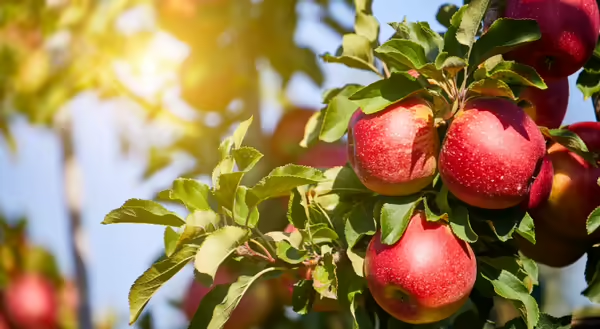
The Refuge Food Forest is quiet. The hum of summer insects among the fruit trees has disappeared, the leaves have all fallen, and their dormant branches stand bare against a cold blue sky. Now is the time for careful pruning with sharp shears and keen eyes. Snip. A twig from an apple tree drops to the ground as it is cut with hand pruners. Thwack. A thicker branch meets the lopper blades. Slowly but surely, an intentional, shapely fruit tree comes into focus from a mass of tangled wood.
As part of my job as a Local Food Systems & Small Farms Educator with University of Illinois Extension, I manage the Refuge Food Forest, a 1.5-acre food access project, public park, and research/demonstration zone that showcases some of the USDA-recognized concepts of agroforestry. There are over four dozen fruit and nut trees and hundreds of fruit and nut-bearing shrubs at the site. To maximize fruit and nut production, regular annual pruning is essential for these plants. Although it is a painstaking job, I find the work to be both meditative and informative.
Fruit Tree Pruning Tips
As late February approaches, commercial orchard owners, home growers, and researchers prepare for the inevitable task of pruning. This process is vital for the health of the trees, the production of fruit, and the overall aesthetics of the area. Preparation involves disinfecting, sharpening, and oiling tools such as loppers, hand pruners, pole saws, backpack pruners, and more.
For all types of trees, including apple, pear, peach, cherry, and plum, there are commonalities that make this task manageable. First, prune away any dead, diseased, or damaged wood.
During strong summer storms, branches often break due to the weight of heavy fruit. Mower damage can happen throughout the season. Dead or damaged and improperly healed wood can harbor insects or disease pathogens that can damage or destroy fruit. It's important to remove all of these problematic elements.
Next, all trees need maximum airflow and light penetration.
Where branches cross each other, one of them should be removed. Crossing branches will shade one another, causing the energy of the lower branch to be wasted if it remains on the tree. Further, the dense thickets of branches that fruit trees can create in their canopies are a breeding ground for disease, especially in high-humidity events like prolonged late spring rains. Open them up!
Sunlight should reach every major branch on fruit trees. Each leaf on every tree is like a solar panel, producing plant sugars through photosynthesis. If you like larger apples, pears, peaches, cherries, and other fruits, it's important to make cuts on your fruit trees to allow for better sunlight exposure. Prune semi-dwarf apple and pear trees into a central leader shape. Prune cherries and peaches to create an open center.
Never prune more than 25% of any fruit tree’s wood in a single dormant season. This 25% is known as the pruning budget. Going "over budget" will throw the tree into survival mode, and it will grow many “water sprouts” that season which will need to be pruned out next season. Water sprouts are vertical, vegetative branches that emerge from dormant buds and steal the tree’s energy away from developing fruits.
Apple trees and pear trees should be pruned in late February and early March in central Illinois. Cherry trees should be pruned after the apples and pears in mid-March before the buds begin to swell. Peach trees should be pruned last, as their buds start to swell and turn pink.
Young fruit trees with evenly developing scaffold branches do not need pruning during their first two years of growth. Trees that are between three and five years old will only require minor pruning. After five years of growth, most fruit trees can take moderate pruning activity.
Visual learners can watch Getting Started in Fruit Tree Pruning, a fantastic introductory video presented by Horticulture Educator Andrew Holsinger, on the University of Illinois Extension Horticulture YouTube channel.
The best way to learn how to prune fruit trees is through hands-on experience, making observations of what happens, taking notes, and trying again next year. If you have questions about pruning fruit trees, don’t hesitate to contact your local Extension office for assistance.